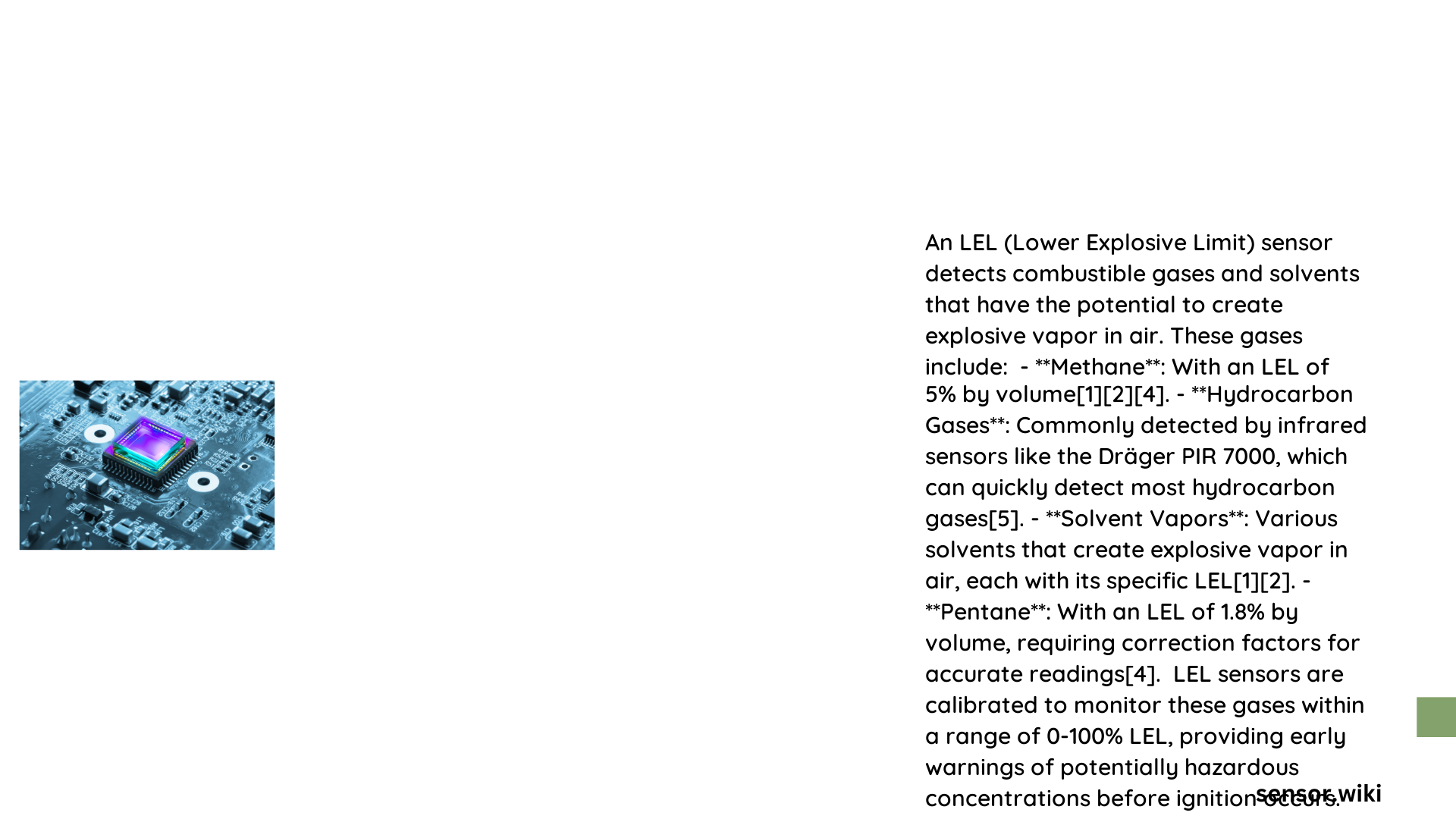Lower Explosive Limit (LEL) sensors are critical safety devices designed to detect a wide range of combustible gases in industrial, commercial, and residential environments. These sophisticated sensors identify potentially explosive gas concentrations by measuring the percentage of gas present in the air relative to its lower explosive limit, providing crucial early warning systems that prevent potential catastrophic incidents across multiple sectors.
What Gases Can an LEL Sensor Actually Detect?
LEL sensors are engineered to detect multiple combustible gases with varying explosive characteristics. The range of detectable gases is extensive and includes:
Primary Combustible Gases Detected
- Methane (CH4)
- LEL: 5.0% by volume
-
Typical Detection Range:
- 20% LEL (1% by volume)
- 40% LEL (2% by volume)
-
Propane (C3H8)
- LEL: 2.1% by volume
-
Typical Detection Range:
- 20% LEL (0.42% by volume)
- 40% LEL (0.84% by volume)
-
Hydrogen (H2)
- LEL: 4.0% by volume
- Typical Detection Range:
- 20% LEL (0.8% by volume)
- 40% LEL (1.6% by volume)
Extended Gas Detection Capabilities
| Gas | LEL (% by volume) |
|---|---|
| Acetone | 2.5% |
| Acetylene | 2.5% |
| Ammonia | 15% |
| Benzene | 1.2% |
| Butane | 1.9% |
| Carbon Monoxide | 12.5% |
| Ethanol | 3.3% |
| Ethylene | 2.7% |
How Do LEL Sensors Detect Different Gases?

LEL sensors primarily utilize catalytic bead technology to detect combustible gases. This method involves:
- Catalytic Oxidation: Heating a combustible gas to measure temperature changes
- Comparative Analysis: Comparing sensor bead temperatures against a reference bead
- Concentration Calculation: Determining gas concentration based on temperature differential
Factors Affecting Gas Detection Accuracy
- Environmental conditions
- Sensor calibration frequency
- Maintenance protocols
- Specific gas properties
- Sensor technology limitations
Why Precise Gas Detection Matters
Accurate LEL sensor readings are crucial for:
– Preventing potential explosions
– Ensuring workplace safety
– Protecting industrial equipment
– Maintaining regulatory compliance
– Minimizing environmental risks
Best Practices for LEL Sensor Maintenance
- Calibrate sensors every 6-12 months
- Perform regular sensor cleaning
- Replace sensors according to manufacturer recommendations
- Use controlled calibration gases
- Monitor environmental conditions
Technical Considerations for Gas Detection
LEL sensors must account for:
– Specific gas lower explosive limits
– Variations in gas concentration
– Environmental interference
– Sensor sensitivity drift
– Potential cross-interference between gases
Advanced Detection Techniques
Modern LEL sensors incorporate:
– Automatic self-calibration
– Remote monitoring capabilities
– Digital signal processing
– Enhanced sensitivity algorithms
– Multi-gas detection features
Potential Limitations and Challenges
While LEL sensors are highly effective, they may face challenges such as:
– Environmental sensitivity
– Potential sensor degradation
– Complex gas mixture interactions
– Periodic recalibration requirements
Emerging Technologies in Gas Detection
The future of LEL sensors includes:
– Artificial intelligence integration
– Wireless connectivity
– Real-time data analytics
– Improved sensor materials
– Enhanced predictive maintenance capabilities
Conclusion
LEL sensors represent a critical technology for detecting a diverse range of combustible gases, providing essential safety mechanisms across multiple industries. Understanding their capabilities, limitations, and maintenance requirements ensures optimal performance and risk mitigation.
